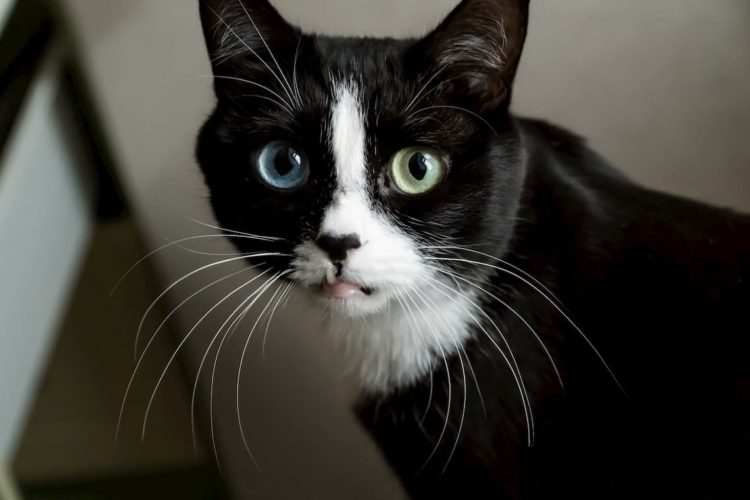Black cats can develop heterochromia – but it’s not as common for black cats as it is for other cat breeds. You’re more likely to encounter a black cat with beautiful green eyes than you would with two different eye colors. It’ gorgeous either way, though!
Even though black cats usually have green eyes, other types of cats are more likely to develop heterochromia. For example, Siamese cats are known for having blue and green eyes.
Other cat breeds, such as the Sphynx cat and the Persian cat, have a higher chance of developing heterochromia than a black cat does.
At this point you’ve probably realized that white and light-colored cat breeds are likelier to have heterochromia – but don’t let that make you believe there are no black cats with different colors in their eyes. It can happen!
How likely is it for a black cat to have heterochromia?
There’s a low chance for a black cat to develop heterochromia. You can expect your cat to develop green eyes after 6 weeks of being born. There’s a smaller chance of your cat keeping its kitten-like blue eyes. Or, perhaps, it’ll have yellow eyes. Heterochromia is far from likely, though.
Heterochromia, or having different colors in each eye, is rather uncommon in black cats. You will spot a few of them with one blue eye and one green eye here and there – but, more likely than not, you’ll get to see a lot of black cats with green or yellow eyes but not both.
There’s a slim chance for it to happen, though!
How do black cats get heterochromia?
There are two ways for a black cat to develop heterochromia: as a hereditary condition or acquired over time. If it’s hereditary, there’s nothing to worry about. On the other hand, acquired heterochromia may be a reason to see a vet.
Hereditary heterochromia comes from genetics. Either a kitten’s mom or dad (or both) had it and passed it down to its baby. There are three types of hereditary heterochromia:
- COMPLETE: One eye is different from the other. For example, a cat’s left eye is green and the right eye is blue.
- CENTRAL: There are different colors inside each eye. For example, the center of a cat’s eyes is yellow surrounded by a green halo.
- SECTORAL: Similar to central heterochromia, but colors are segmented. For example, half of a cat’s eye is blue and the other half is green.
Complete heterochromia is the most common out of the three, but it’s not out of the ordinary for a cat to have central or sectoral heterochromia.
While hereditary heterochromia is good news, acquired heterochromia could mean trouble.
Loss of eye color over time could be related to physical injury, a medical condition, or a bad reaction to a medication. If left unattended, acquired heterochromia could lead to more permanent issues, such as loss of vision.
If your cat seems to have developed heterochromia as an adult, make sure you check that with your vet!
